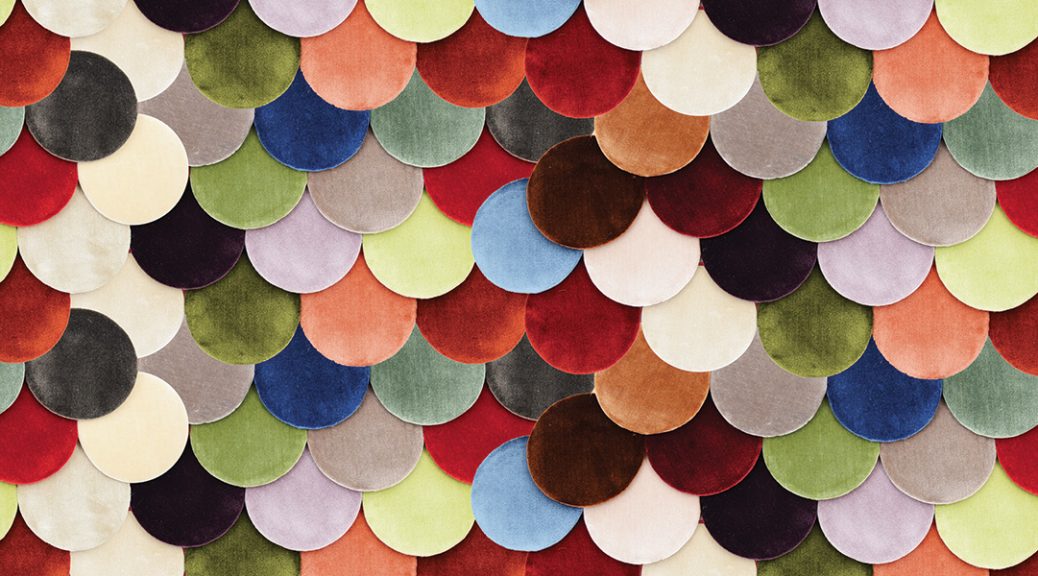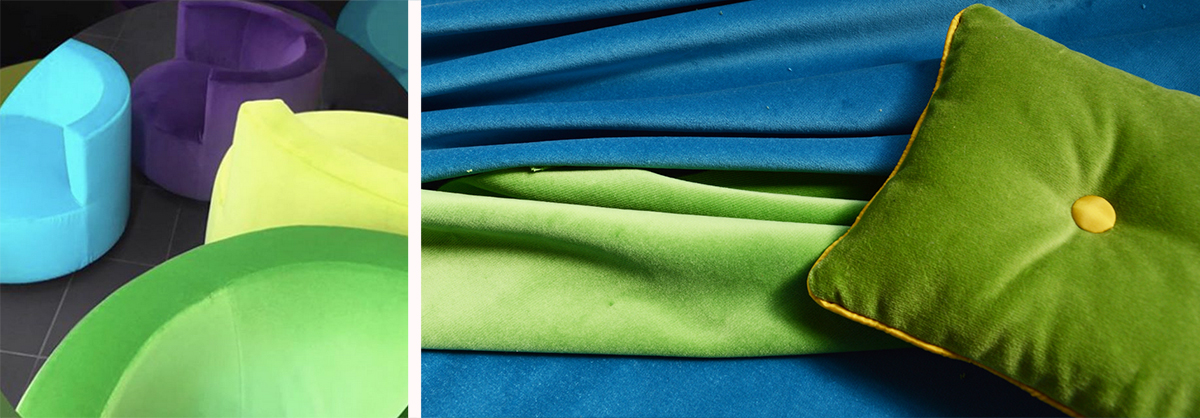Discover the velvet hair fabric

Velvet is the fabric which, more than the others, with is soft touch, brushes our senses with intensity.
The unified velvet (also called smooth or cut) contemporary production is achieved with the double piece technique and the obtained velvets are then submitted to different finishing treatments.
For example, a lot of velvets produced on double piece looms are first dyed in piece and then finished with special ravelling, trimming and polishing machines in order to achieve a perfectly uniform hair, the typical softness to the touch and brightness.

Not all the velvets are the same, the differences depend, first of all, on the chosen yarns for the hair weaving, which are determining for the brightness and softness.
Talking about silk velvet, for example, we specify the silk yarn of which the hair warp is made while for the cotton velvet, the hair warp will be 100% cotton.
It will therefore always be the type of fiber chosen for the hair warp and its quality what give the velvets all the special and unique characteristics.
Distinguishing one type from the other is not always simple, because often, in order to reach new qualitative standards are employed mixed fibers.
Silk is the fiber which, since always, is weaved in order to obtain the most precious velvets, with the typical shiny, shimmering and soft look (for further information about l'Opificio silk velvet production, see https://lopificio.it/en/velvets )
The cotton gives the velvet a more opaque look, but, at the same time, is much more resistant. l'Opificio cotton velvets, thanks to the high quality of the cotton yarn used for the weaving, have a Martindale resistance higher than 100000.
Also the Linen Velvet, to which we dedicate long and special finishing processes in order to obtain a final look particularly comfortable starting from a woody fiber, has an opaque look, but turns out to be very solid and fire resistant and, by well absorbing the dyeing, allows to obtain very intense colors.
The Viscose Velvet is shiny and bright while the Kid Mohair Velvet is weaved starting from a rare and precious fiber which allows to obtain a very comfortable but at the same time solid and fire retardant velvet, always used for armchairs and theatres upholstery (for further information about the Kid Mohair see https://lopificio.it/en/kid-mohair-velvet )
The name velvet derives from latin vellus, 'fur', with reference to an hair-like cover.
It seems that hairy fabrics had their origin in the East and that came to Europe called “sciamiti”. In Italy, the word “velvet” became frequently use around the XIII century; the first velvets in Europe were produced, imitating the eastern ones, in Palermo (south of Italy) by Arabian importation and in Venice, due to the exhanges with the East.
Since the XIV cen. until the XVIII the main italian production centres were: Catanzaro, Como, Ferrara, Florence, Genoa, Venice, Lucca, Mantova, Milan and Turin.
Out of Italy, only France was important in the production of velvets thanks to italian workers, especially Genoese, who brought the use of velvets and the production.
In other countries, production was scarce; for this reason, until the XVIII century, Italy supplied all Europe with clothing, wallpapers, upholstery for furniture and carriage velvets.
(fr. velour; sp. terciopelo; deut. samt; eng. velvet)

